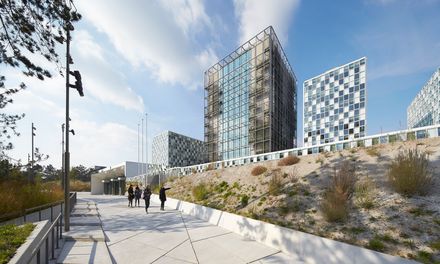
International Criminal Court In The Hague
CATEGORY
Courthouse
LOCATION
The Hague, The Netherlands
AREA
46000.0 m²
YEAR
2014
ARCHITECST
SHL Architects
PHOTOGRAPHS
Adam Mørk, Hufton+Crow
CLIENT
The International Criminal Court
SUBCONSULTANTS
Royal Haskoning, Bosch & Fjord
ENGINEER
Royal Haskoning/ Esbensen Consulting Engineers
PROJECT MANAGEMENT
Brink Groep
CONTRACTOR
Courtys
INTERIOR DESIGN ART
Bosch & Fjord/ Schmidt Hammer Lassen Architects
LANDSCAPE
SLA
MANUFACTURER
Kvadrat Soft Cells, Hunter Douglas Architectural (Europe), Glasimpex,
Kone, Maars, Milliken, Mosa, Verwol, Kvadrat, Hunter Douglas, Hunter Douglas Architectural (Europe)
Text description provided by architect.
When designing the new permanent premises of the International Criminal Court, the point of departure was to communicate trust, hope and – most importantly – faith in justice and fairness. The building should have the courage to be an ambassador for the credibility of the ICC.
The project and its architecture are impressive and grandiose but always relate to humans and the human scale.
It is important that a formal institution like the ICC does not constitute barriers for people. On the contrary, it must express the very essence of democratic architecture.
By designing a compact building with a small footprint, the landscape is returned to the city so that the open spaces, the sky and the horizon become an integrated part of the architectural composition.
The building is designed as a sculptural abstraction – a composition of six volumes, firmly anchored to the site and rising from the surrounding dune landscape.
The tallest of the volumes is the Court Tower that rises up as a green element.
The architectural idea is to continue the cultivated parterre gardens from the ground floor level, as a cladding on the Court Tower.
Historically, gardens have always existed as part of all cultures and all religions.
With flowers and plants from each of the 110 member countries, the parterre garden rises up as a symbol of unity, regardless of nationality and culture.
The remaining volumes, the office towers, are draped in a tapestry grid, almost like embroidery.


























